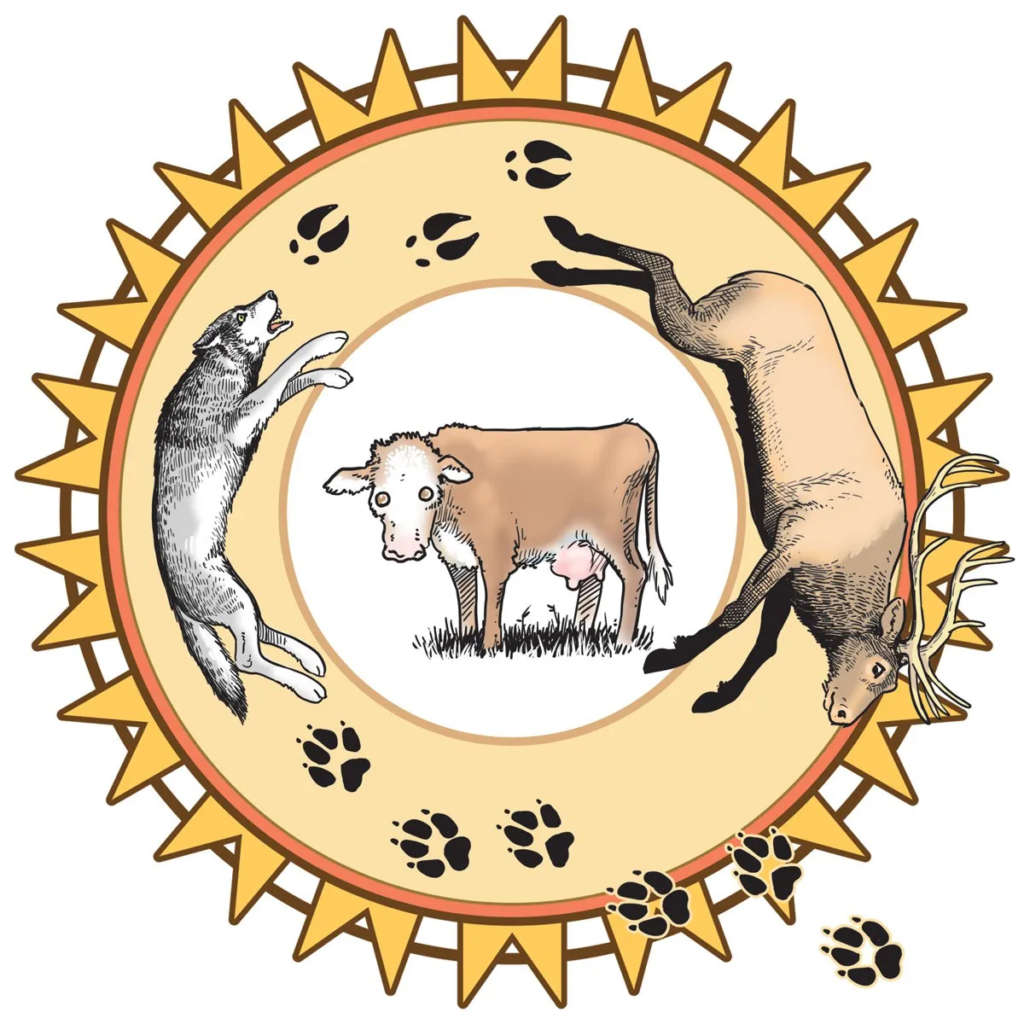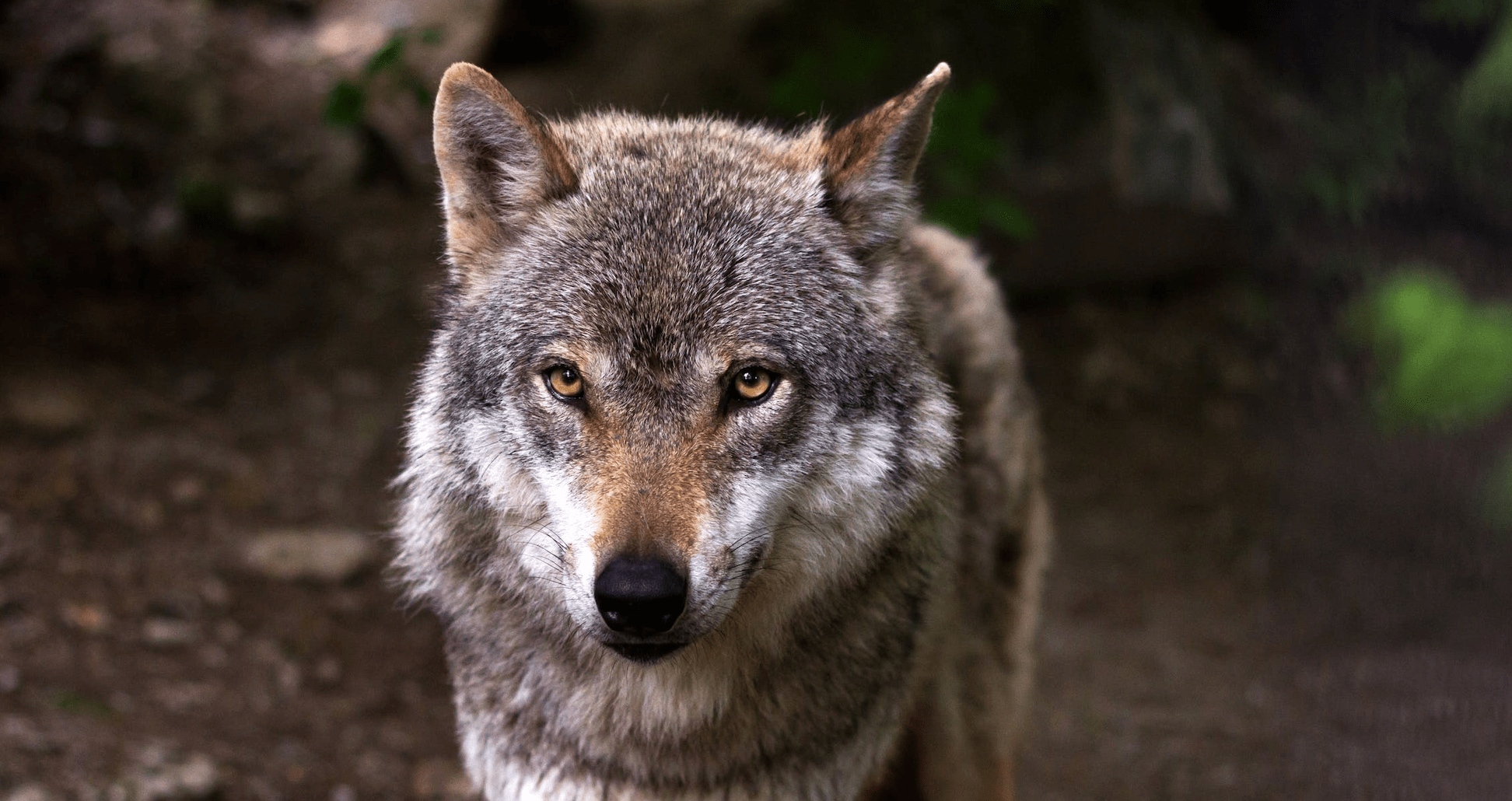This story first appeared in High Country News on Feb. 1, 2024.
When Colorado voted for wolf reintroduction, it also mandated compensation for ranchers. The hard part: figuring out the details.
ON DEC. 18, DIGNITARIES watched as five wolves bounded from crates, loped across snow and brittle grass, and vanished into scraggly forest. Tranquilized with darts fired from helicopters in Oregon a day earlier, the quintet had been fitted with tracking collars, flown to Colorado and driven to a remote corner of Grand County, where they became the first wolves released under the state’s voter-led reintroduction program. In the following days, Colorado Parks and Wildlife freed another five wolves; over the next several years, it plans to release up to 40 more.
In theory, the canids are well-positioned to flourish: Colorado boasts more than 23 million acres of public land and the West’s largest elk herd. But the Centennial State is also home to more than 3 million head of cattle and sheep — a powerful temptation to wide-ranging carnivores.
Although livestock depredation is rare — wolves are responsible for around 1% of unwanted cattle deaths in other Rocky Mountain states — it can be costly to ranchers. In 2022, Montana shelled out nearly $100,000, and Wyoming almost twice that, to compensate ranchers for wolf-killed livestock.
Proposition 114, the 2020 Colorado ballot initiative mandating wolf reintroduction, required the state to “pay fair compensation” for “any losses of livestock caused by gray wolves.” But it said nothing about the circumstances under which ranchers would be paid, how much they’d get, or what constituted “fair.” The program the state eventually devised is perhaps the country’s most comprehensive. It is also an experiment — and the fate of the state’s new wolves may depend on its success.

AFTER PROPOSITION 114 PASSED, the state of Colorado convened a 17-person panel known as the Stakeholder Advisory Group, which included ranchers, outfitters, Southern Ute tribal biologists and conservationists. For around 18 months, they debated every aspect of reintroduction, from the pace of releases to wolf-handling techniques. Yet no topic dominated the deliberations like compensation — the “most contentious” among the issues discussed, according to Pitkin County Commissioner Francie Jacober, an advisory group member and a pro-wolf rancher. Proposition 114 required compensation for losses, but which losses? For every slain cow or sheep that inspectors can definitively blame on wolves, others may be dragged off, never to be found. And counting fatalities omits less tangible costs, such as cows’ failure to gain weight when they’re harried by predators.
Western states have varied approaches to handling these subtler harms. While Oregon and California pay straight market value for dead livestock, Washington coughs up double on large ranches and allotments where carcasses are harder to find. Most munificent is Wyoming, which in some cases pays sevenfold for dead stock, a multiplier known as the “compensation ratio.”
In Colorado, most of the advisory group’s members ultimately supported a generous ratio. They proposed that Colorado ranchers be paid for up to seven missing calves or sheep for every confirmed kill — provided they’ve also attempted to deter predators with “conflict minimization” measures like guard dogs and range riders. Producers who don’t employ such techniques are eligible for a five-to-one payment. (Ranchers who scrupulously document weight losses and other wolf-related costs can also skip the ratios and submit itemized losses instead.) If you deploy wolf repellents but lose livestock anyway, in other words, you’re eligible for more money than your neighbor who doesn’t.
When Colorado Parks and Wildlife incorporated the group’s suggestions, it made some tweaks: The group proposed paying up to $5,000 per dead animal, for instance, but the agency bumped the cap to $15,000. It preserved the dual ratio system, though — an incentive for conflict minimization that “is a comprehensive and fair approach,” according to Brian Kurzel, Rocky Mountain regional executive director for the National Wildlife Federation and an advisory group member. “That’s something that’s going to set Colorado apart.”
WHY COMPENSATE RANCHERS at all? One reason, scientists suggest, is equity: Predators are a state-owned resource that benefits the public, but the costs fall largely on livestock producers. Another theory is that if a rancher knows he’ll be covered for losses, he’ll be less likely to grab a rifle when wolves appear. (Because the U.S. Fish and Wildlife Service considers Colorado’s wolves “a nonessential experimental population” under the Endangered Species Act, landowners can kill wolves that are caught attacking livestock.) Compensation, by this rationale, benefits carnivores themselves.
All this sounds intuitive, but there’s not much evidence for it. In Wisconsin, surveys showed that ranchers who were compensated had no kinder feelings toward wolves. A 2018 High Country News investigation found that paying more for dead cows didn’t make Oregon kill fewer wolves at ranchers’ behest. According to Hallie Mahowald, chief programs officer at the Western Landowners Alliance and an advisory group member, the concept of “buying tolerance” offends some ranchers, insofar as it ignores their emotional attachment to their livestock. “There are psychological impacts to these losses,” Mahowald said. “It’s not just economics.”
Indeed, despite a compensation plan that Lenny Klinglesmith, a Meeker-based rancher and an advisory group member, calls the “best in the nation,” wolves remain Lupus non grata to many Coloradans. “Most of my colleagues are extremely anxious and, frankly, still pretty bitter,” said Klinglesmith. In mid-December, two cattle groups sued to stop the releases — a request that a judge denied, in part because the compensation program, funded by Colorado’s Legislature at $350,000 per year, shielded ranchers from “irreparable harm.” But Andy Spann, president of the Gunnison County Stockgrowers’ Association, noted that conventional compensation doesn’t cover the labor costs of conflict prevention. “If I have someone out there in the middle of the night keeping the wolves away in calving season, that’s a cost imposed on me,” he said.
If ranchers aren’t satisfied, neither are some conservationists. According to Matt Barnes, a rangeland scientist and an advisory group member, traditional compensation “rewards the outcome nobody wants.” Better, perhaps, to incentivize a desirable result — the absence of conflict — through “pay for presence” programs, which reward ranchers for hosting predators on their land. In Mexico, conservation groups pay ranchers for camera-trap photos of jaguars, cougars and other felines, thus allaying ranchers’ desire to kill them. In 2014, pay-for-presence received a trial run in the Southwest, where the Mexican Wolf/Livestock Coexistence Council launched a program that, in addition to paying ranchers ex-post compensation, disbursed funds through a formula that included factors such as pup survival and the number of wolves on an allotment. Barnes established a subcommittee to evaluate similar approaches in Colorado, but the concept never gained traction among the group’s ranchers; Klinglesmith said it seemed difficult to implement and potentially unfair to producers who suffered disproportionate losses. “I think it was just too out-of-the-box” for some members, Barnes said.
Even so, the perspective shift that pay-for-presence seeks — from after-the-fact depredation payments to proactive conflict reduction — is, to some extent, already happening. Colorado Parks and Wildlife is making noise cannons and other wolf deterrents available to ranchers near release sites; the Rocky Mountain Wolf Project has created a license plate that funds conflict mitigation; and Colorado State University’s Center for Human-Carnivore Coexistence is soliciting donations for range riders, guard dogs and other preventive measures. And in Colorado’s North Park, now home to wolves that migrated from Wyoming on their own, some ranchers are collaborating with Working Circle, a nonprofit that works with ranchers to reduce their herds’ vulnerability. “You’re never going to eliminate conflict, but you can minimize it,” said Karin Vardaman, Working Circle’s co-founder. The most important test of a compensation program, in the end, is how little a state has to use it.
Note: This story was updated to correct the number of acres of public land in Colorado. It has more than 23 million acres, not 8.3 million.
Ben Goldfarb is a High Country News correspondent and the author of Crossings: How Road Ecology Is Shaping the Future of Our Plane andEager: The Surprising, Secret Life of Beavers and Why They Matter. Follow @ben_a_goldfarb




